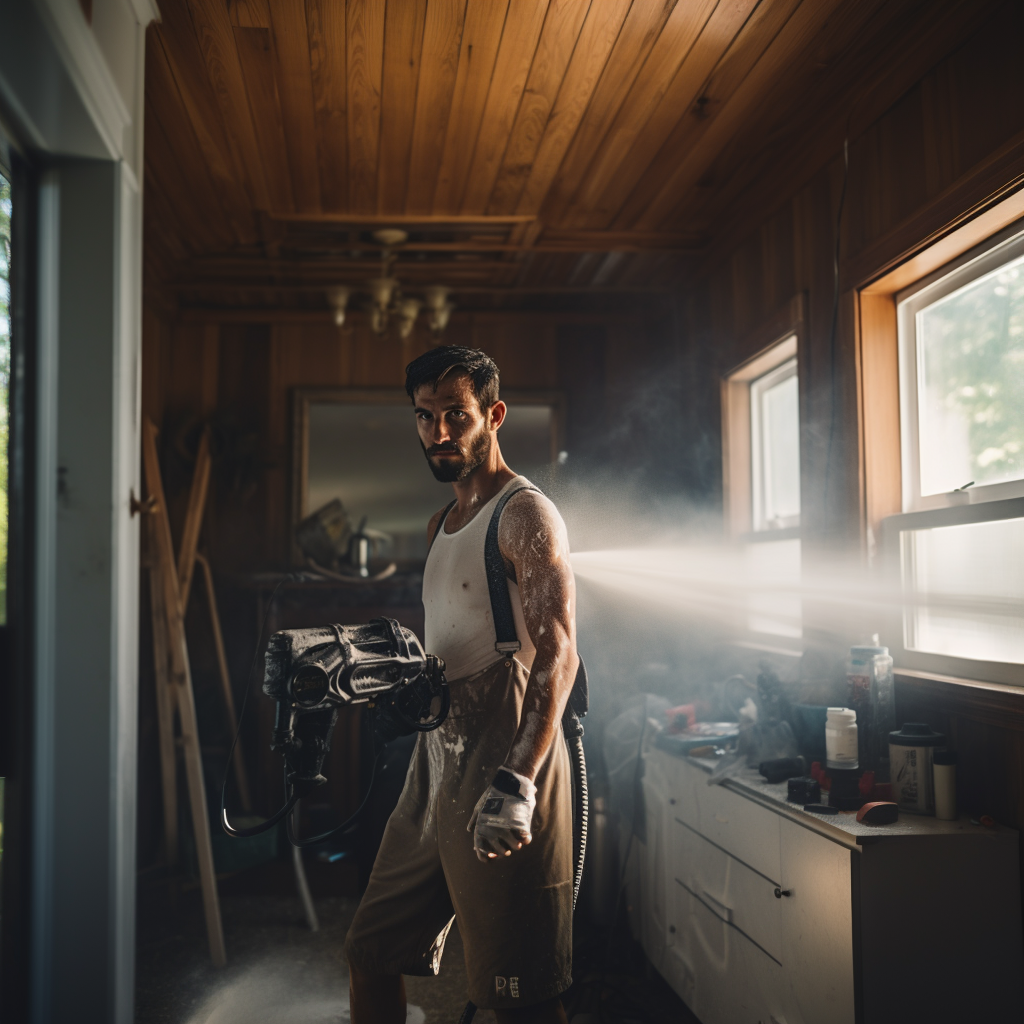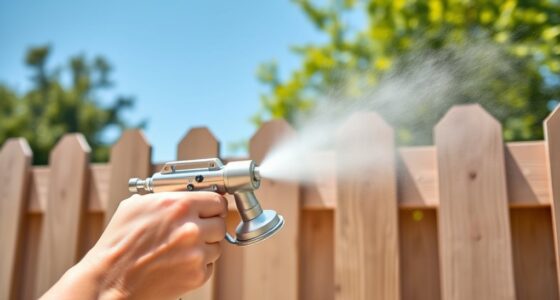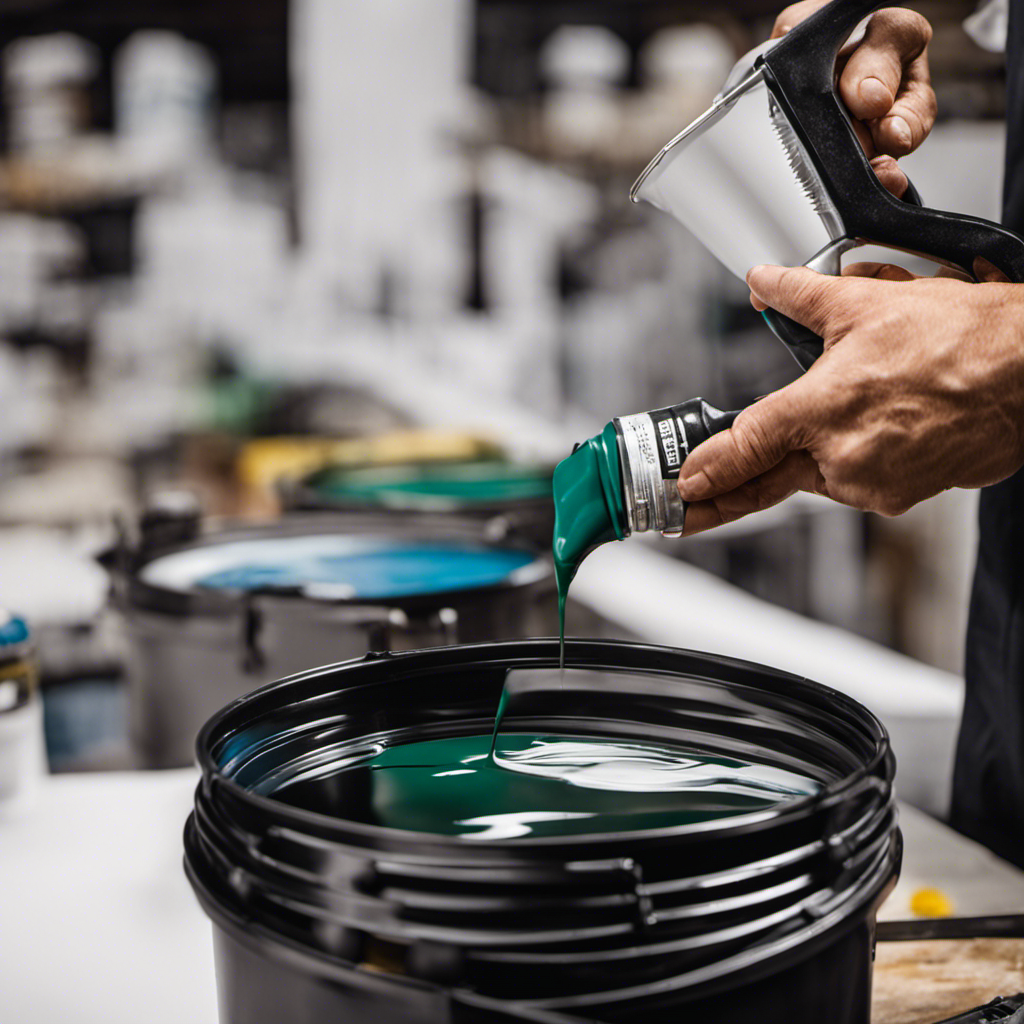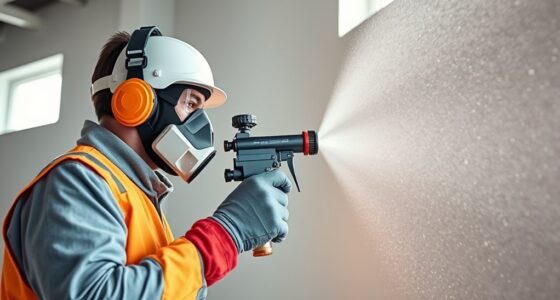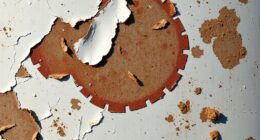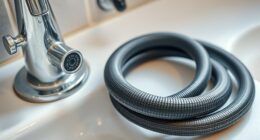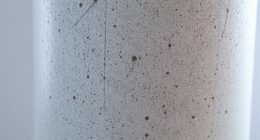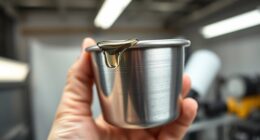To refinish old furniture with an HVLP sprayer, start by preparing and properly mixing your paint for a smooth application. Practice on scrap first, then adjust the pressure to 20-30 PSI. Keep the sprayer consistent about 6-12 inches from the surface, using overlapping strokes for an even finish. You can create vintage distressed or sleek modern looks with different techniques. If you want to discover more tips and tricks, keep exploring how to master your spray finishing skills.
Key Takeaways
- Properly prepare and clean the furniture surface to ensure optimal paint adhesion and a smooth finish.
- Adjust HVLP sprayer settings for different effects, from light, vintage washes to sleek, modern coats.
- Use consistent, overlapping strokes and maintain proper distance for even coverage and desired look.
- Experiment with layering, blending, or distressing techniques to achieve vintage charm or contemporary styles.
- Allow adequate drying time between coats and finish with light sanding for a professional, durable result.
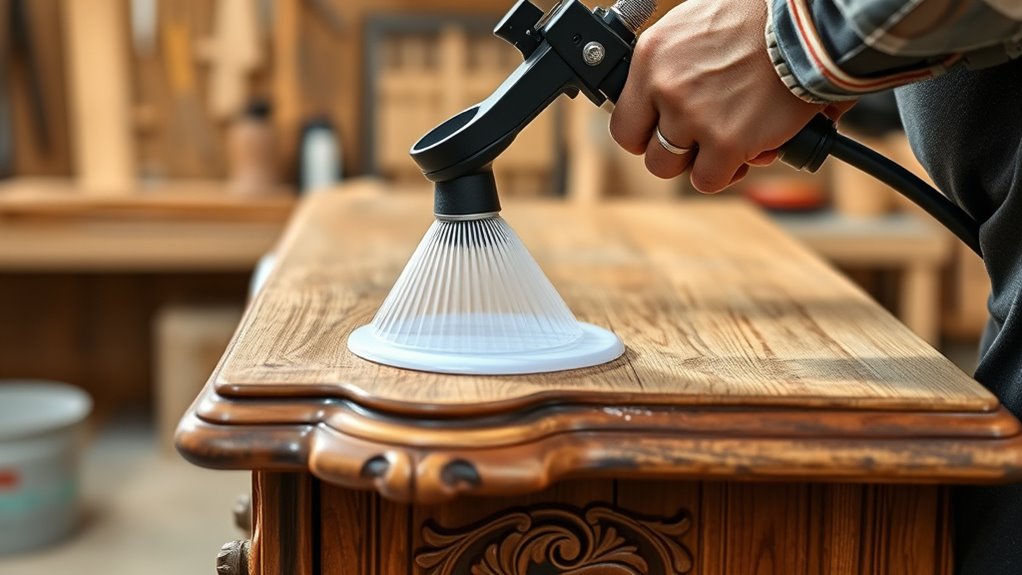
Refinishing old furniture can breathe new life into tired pieces, and using an HVLP sprayer makes the process faster and more professional. To achieve smooth, even coats, understanding proper brush techniques is essential, especially when preparing for spray application. Before you start, take time to perfect your brush skills—strokes should be light and consistent, following the grain of the wood to avoid streaks or uneven coverage. This step is particularly important if you’re blending different paint layers or doing touch-ups before the spray. Good brush techniques help you lay down a uniform base, ensuring that your final finish looks flawless and polished. Additionally, understanding the comparative advantage of spray versus brush application can help you decide the most efficient method for your project.
Master light, consistent brush strokes following the wood grain for a flawless furniture finish.
Equally important is paint mixing. Properly mixing your paint ensures color consistency and the right texture for spraying. Always stir your paint thoroughly to incorporate pigments evenly, avoiding the need for multiple coats or uneven results. If you’re working with multiple colors or different brands, test the mix on a scrap piece first. Add thinning agents or water as needed, following manufacturer instructions, to achieve a smooth, sprayable consistency. A well-mixed, appropriately thinned paint flows smoothly through the HVLP sprayer, reducing sputtering and drips, and producing a professional finish.
Once your paint is ready, set your HVLP sprayer to the correct pressure—usually between 20 and 30 PSI—and practice on scrap wood or cardboard. Keep the sprayer at a consistent distance from the surface, generally 6 to 12 inches, moving steadily to avoid drips or thick spots. When you’re ready to paint, use overlapping strokes, maintaining a steady pace to ensure even coverage. This technique helps eliminate striping and produces a smooth, modern look or enhances the vintage charm, depending on your preference.
If you’re aiming for a distressed or weathered appearance, you might switch between brush and spray techniques, layering and blending paints for depth. Remember, the key to a professional finish is patience—allow each coat to dry completely before applying the next, and lightly sand between coats if necessary. Whether you’re going for a sleek contemporary look or restoring a piece’s nostalgic appeal, mastering brush techniques and paint mixing will elevate your refinishing project. With practice, you’ll gain confidence in your skills, and your furniture will showcase a flawless, durable finish that lasts.
Frequently Asked Questions
What Types of Paint Are Best for HVLP Refinishing?
When choosing paint for HVLP refinishing, you want to guarantee paint compatibility with your surface and desired finish. Water-based acrylics work well for smooth, modern looks, while oil-based paints give a vintage, durable finish. Thin the paint properly to prevent clogging and achieve even application. Using appropriate finishing techniques, like light coats and proper drying, will give you professional results, whether you’re aiming for a classic or contemporary style.
How Do I Prevent Drips and Runs During Spraying?
Think of spray painting like dancing—it’s all about smooth, controlled moves. To prevent drips and runs, keep your paint consistency just right—thinner paint flows better. Use a steady spraying technique, maintaining consistent distance and speed. Avoid lingering in one spot. Practice on scrap first, then apply thin coats. This way, you’ll achieve a flawless finish, turning your project into a masterpiece without the mess.
Can HVLP Sprayers Be Used on Curved Furniture Surfaces?
Yes, HVLP sprayers work well on curved surfaces if you use proper spraying techniques. Keep the spray gun at a consistent distance and move smoothly to avoid uneven coats. Adjust your pressure for better control, and use light, multiple coats rather than thick layers. Practice on scrap or hidden areas first, so you get comfortable handling curved surfaces and achieve a professional, even finish on your furniture.
What Safety Gear Is Recommended When Spraying Furniture?
You might think safety gear is optional, but it’s essential for your protection. When spraying furniture, always wear protective gear like a mask, goggles, and gloves to prevent inhaling fumes or getting paint in your eyes. Make certain proper ventilation tips are followed, like working outdoors or in a well-ventilated space, to avoid harmful fumes. Staying safe allows you to enjoy your project without health risks.
How Do I Maintain and Clean the HVLP Sprayer After Use?
To keep your HVLP sprayer in top shape, follow proper maintenance tips and cleaning procedures. After each use, disassemble the spray gun and rinse all parts with an appropriate solvent or water, depending on your paint type. Use a brush or compressed air to remove paint residues from nozzles and filters. Regularly check and lubricate moving parts to guarantee smooth operation, helping your sprayer last longer and perform better.
Conclusion
Refinishing your old furniture with an HVLP sprayer transforms more than just wood; it breathes new life into memories and stories etched into every grain. As you apply each layer, you’re not just restoring a piece—you’re rewriting its future, turning it from vintage to modern. Think of the sprayer as a brush of renewal, symbolizing your ability to bring fresh beginnings to cherished heirlooms. Embrace the process, and watch your furniture’s story unfold anew.
Franz came aboard the Paint Sprayer Zone team with a background in both journalism and home renovation. His articulate writing style, combined with a passion for DIY projects, makes him an invaluable asset. Franz has a knack for breaking down technical jargon into easy-to-understand content, ensuring that even the most novice of readers can grasp the complexities of paint sprayers.

